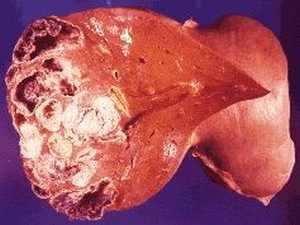

MedFriendly®


Cholangitic Abscess
A cholangitic abscess is a focal area of pus formation
in the liver that is caused by infection in the biliary
tract. The biliary tract is the system in the body that
transports bile. Bile is a fluid produced by the liver that
helps digest fat. Cholangitic abscesses are the most
common form of liver abscess. The bacteria most
and symptoms of cholangitic abscesses include rapid
weight loss, high fever, right upper abdominal pain, and
abnormal enlargement of the liver.
Cholangitic abscess.
FEATURED BOOK: Clinical Infectious Disease
Jaundice (yellow staining of various parts of the body such as the skin) is present in
about 25% of cases. Blood tests will almost always show that the alkaline phosphatase
level is high. Alkaline phosphatase is an enzyme that is present in all tissues. An enzyme
is a type of protein that helps produce chemical reactions in the body.
A single cholangitic abscess can be treated by draining it or by using antibiotic
medications. However, multiple cholangitic abscesses are much more difficult to treat.
About 40% to 80% of patients with cholangitic abscesses die, even with treatment.
Cholangitic abscess comes from the Latin word “chole” meaning “bile,” the Greek word
“angeion” meaning “vessel,” and the Greek word "ikos" meaning "pertaining to." Put the
words together and you have “pertaining to bile vessel going away.”
"Where Medical Information is Easy to Understand"™















